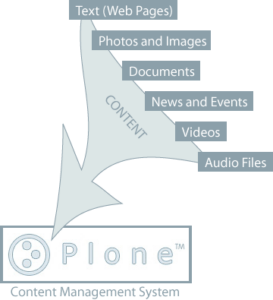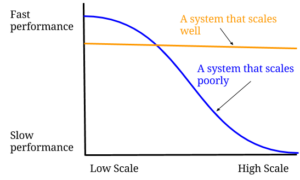Difference Between Dynamic And Static Web Pages
Two basic ideas define the terrain in the broad field of web development: dynamic and static web pages. These phrases refer to several methods of displaying content on the internet, Difference Between Dynamic And Static Web Pages each with unique qualities, benefits, and drawbacks. We examine the distinctions between static and dynamic web pages in this thorough analysis, illuminating their fundamental workings and web development ramifications. You also have to checkout that How Many Types Of Graphic Design
1. Conceptual Synopsis
Static Web Pages: Static web pages display the same material to all users in an unchanging and fixed manner. They are usually provided to the user exactly as they are stored on the server and are written in HTML (Hypertext Markup Language) and CSS (Cascading Style Sheets). The HTML files must be manually edited for any upgrades or changes.

Dynamic Web Pages: In contrast, dynamic web pages are created instantly in response to input or requests from users. They are made with databases to store and retrieve content dynamically and server-side scripting languages like PHP, Python, or Ruby. Customized content can be produced via dynamic web pages in response to user input, database queries, and other factors.
2. Production of Content
Static Web Pages: Static web pages do not require server-side processing; instead, they provide users with pre-rendered content immediately. Until the developer updates it manually, the content stays unchanged. Static websites are simple and quick to set up, but they don’t have the same flexibility and interactivity as dynamic pages.

Dynamic Web Pages: Dynamic web pages provide for personalized and engaging experiences by dynamically generating content at the moment of request. Server-side scripts do computations or database queries to produce HTML content that is customized for each user. Features like real-time updates, personalized suggestions, and user authentication are made possible via this.
3. Scalability and Performance
Static Web Pages: Because they may be served straight from a content delivery network (CDN) and use very little server resources, static web pages are exceptionally performant and scalable. These are perfect for content-heavy websites where updates are made infrequently. But over time, maintaining a lot of static files might become tiresome and ineffective.

Dynamic Web Pages: Compared to static sites, dynamic web pages can be more flexible, but they may also perform and scale less well. Server-side processing, database queries, and more server resources are needed for dynamic content generation, which might affect response times and scalability under high loads. Appropriate caching and optimization techniques are necessary to reduce these performance problems.
4. Content Management
Static Web Pages: Difference Between Dynamic And Static Web Pages Managing content on static websites involves manual editing of HTML files using text editors or content management systems (CMS). Developers must update each page individually to reflect changes or additions, which can be time-consuming and error-prone, especially for large websites with extensive content.

Dynamic Web Pages: Dynamic websites leverage databases and server-side scripts to manage content more efficiently. Content is stored in a database and dynamically retrieved and displayed based on user requests. This allows for centralized content management, version control, and collaborative editing using CMS platforms like WordPress, Drupal, or Joomla.
5. User Experience and Interactivity
Static Websites: Because the content on static websites is preset and fixed, they provide little in the way of user interaction or interactivity. Static sites lack the dynamic features and real-time changes found in dynamic web pages, but they can use client-side scripting languages like JavaScript for simple interactivity, Difference Between Dynamic And Static Web Pages.

Dynamic Web Pages: By adapting dynamically to user input and interactions, dynamic web pages offer richer user experiences and interactivity. AJAX (Asynchronous JavaScript and XML) queries, form submissions, user authentication, and real-time updates without page reloads are just a few of the capabilities they can include. Web apps that are more responsive and immersive are made possible by this.
6. Security Considerations
Static Web Pages: Static web pages are generally considered more secure than dynamic sites since they do not rely on server-side processing or database interactions. However, security vulnerabilities can still arise from improper file permissions, outdated software, or insecure third-party components.

Dynamic Web Pages: Dynamic web pages are more susceptible to security risks due to the complexity of server-side scripting, database interactions, and user input processing. Difference Between Dynamic And Static Web Pages Common security threats include SQL injection, cross-site scripting (XSS), and session hijacking. Proper security measures such as input validation, parameterized queries, and secure authentication mechanisms are essential to mitigating these risks.
7. Applications and Use Cases
Static Web Pages: Simple websites, landing pages, blogs, documentation sites, and portfolios with little to no interaction and infrequently changing material are good candidates for static web pages. For better efficiency, they are also perfect for hosting static assets on CDNs, such as pictures, CSS files, and JavaScript libraries.

Dynamic Web Pages: When content needs to be personalized, updated often, and interacted with in real-time, dynamic web pages are essential for online forums, social networking sites, e-commerce platforms, web apps, and content management systems. They make it possible for sophisticated features like dynamic content creation, shopping carts, user accounts, and search capabilities.




